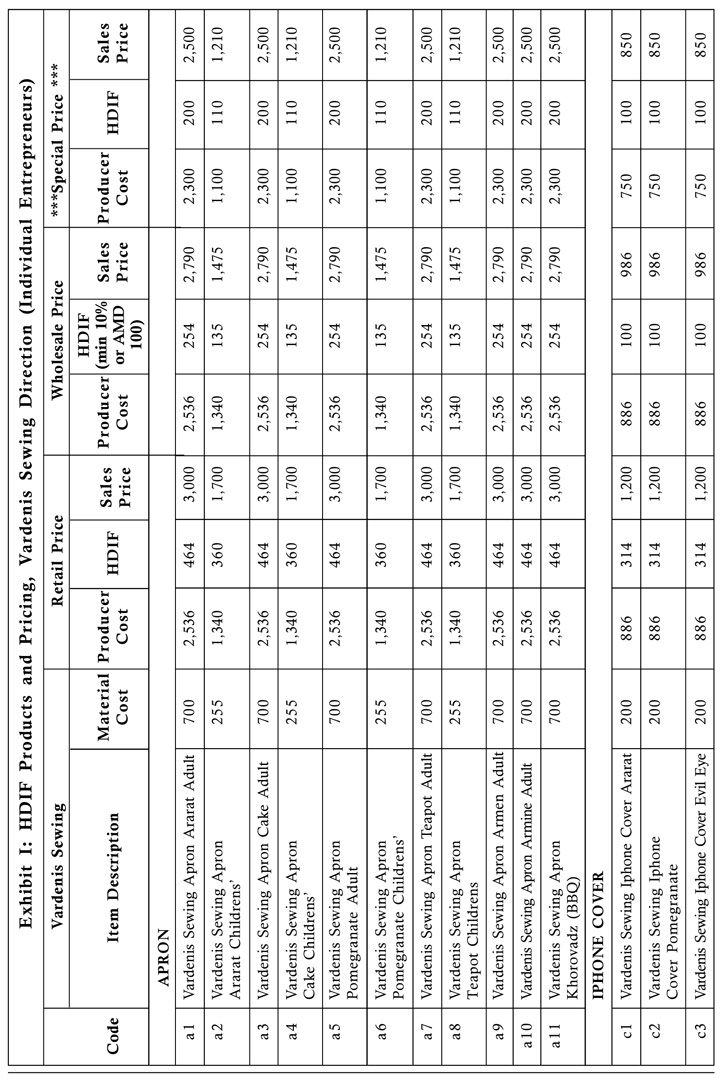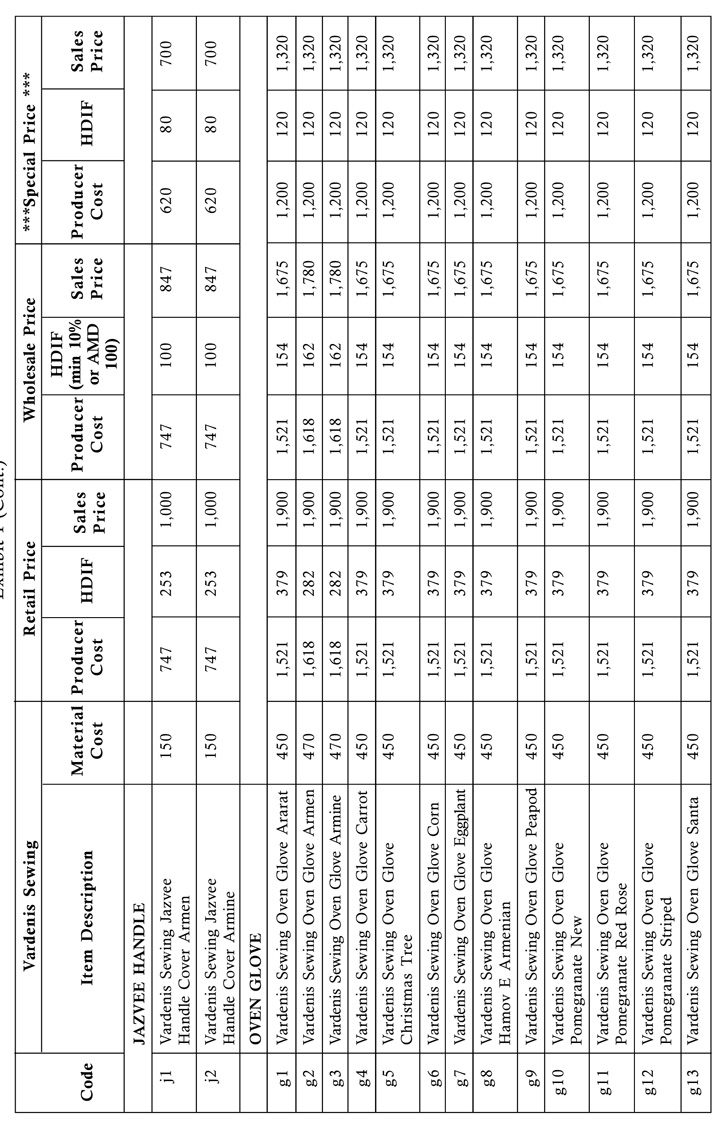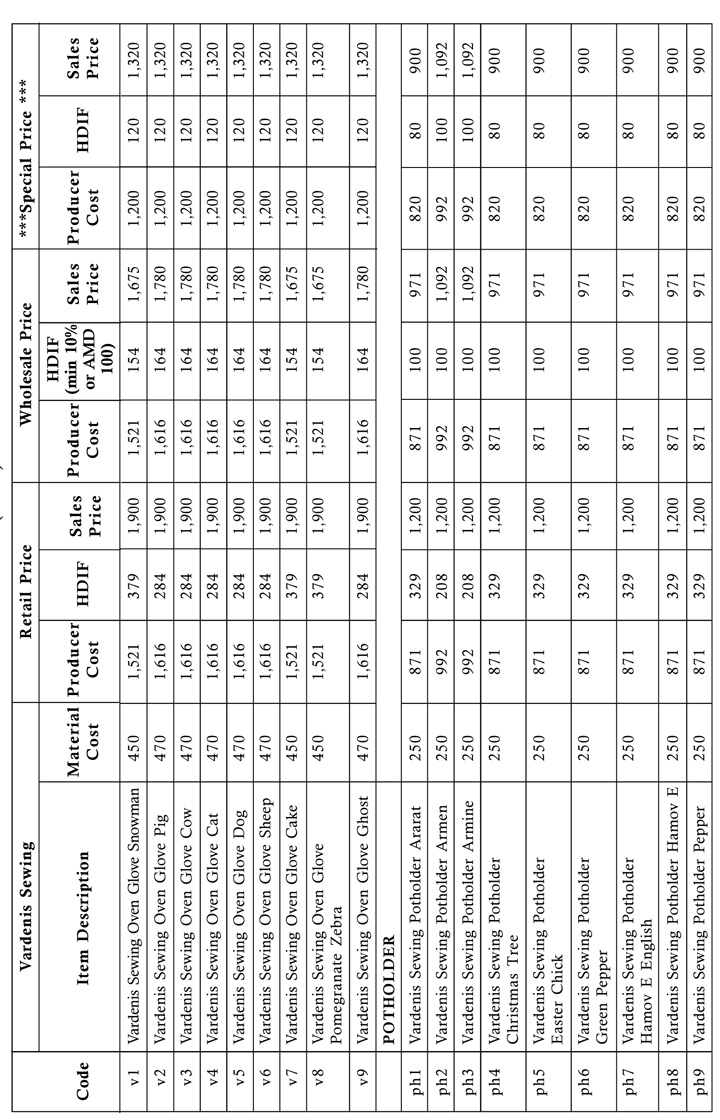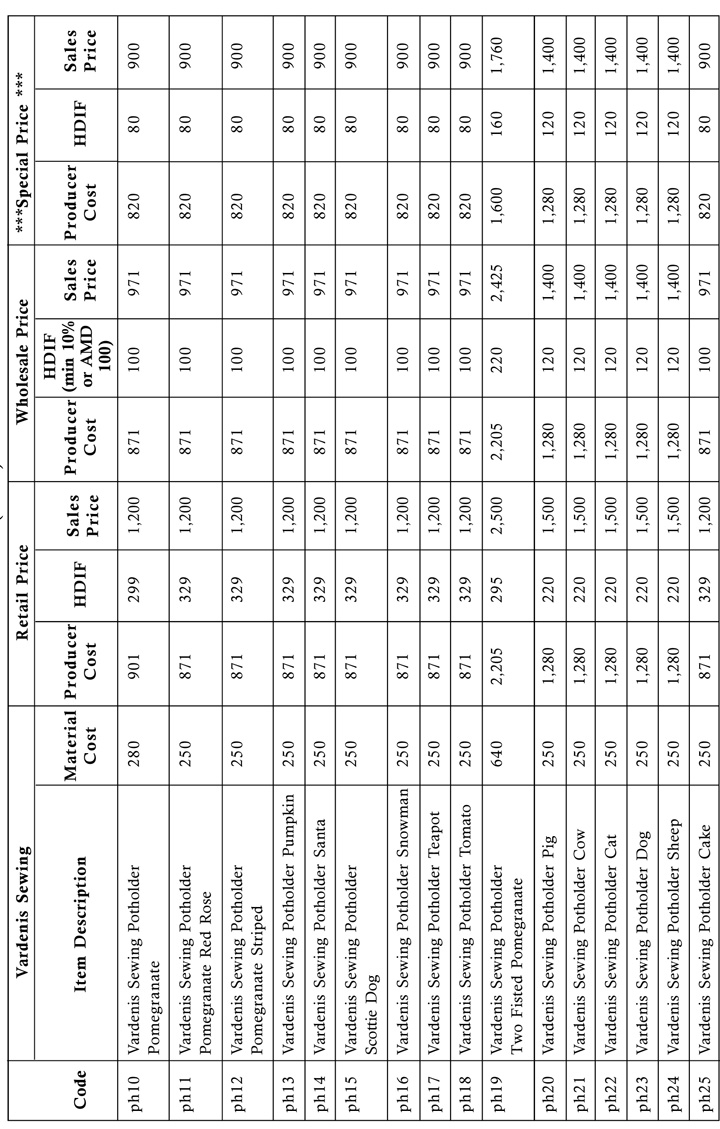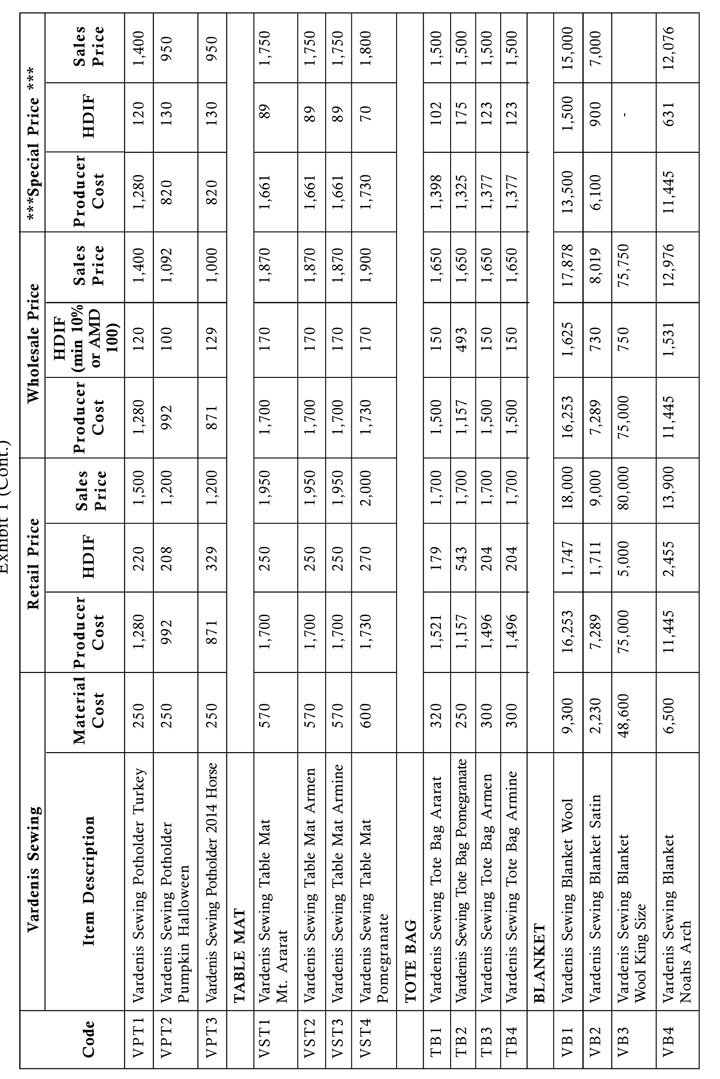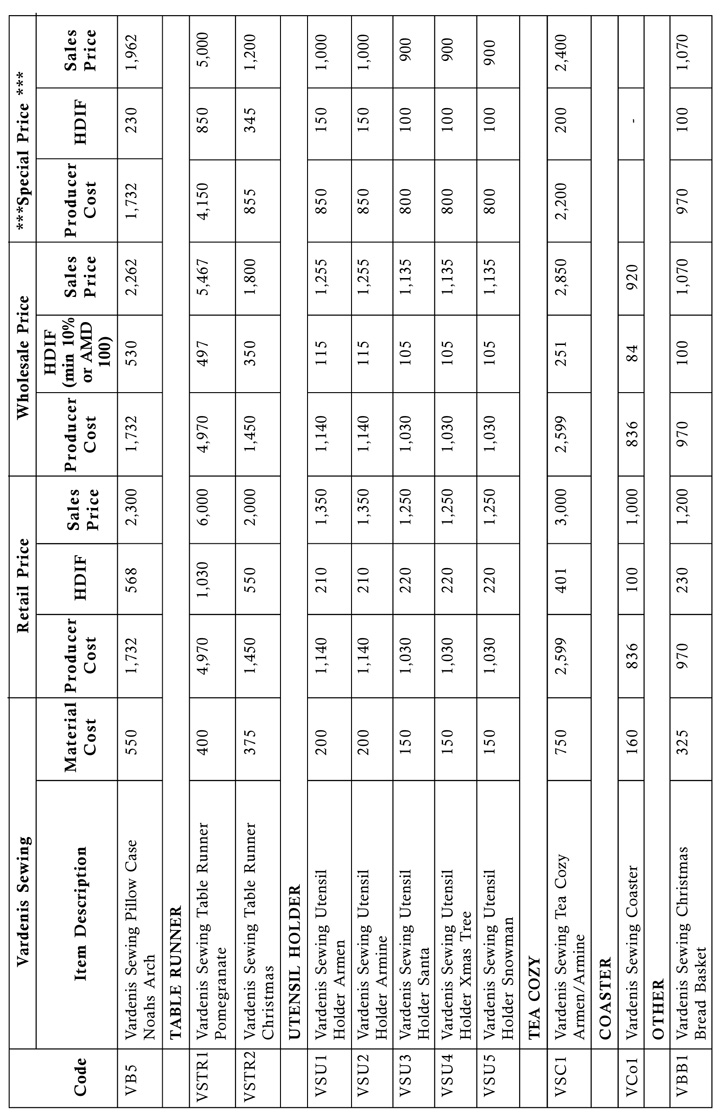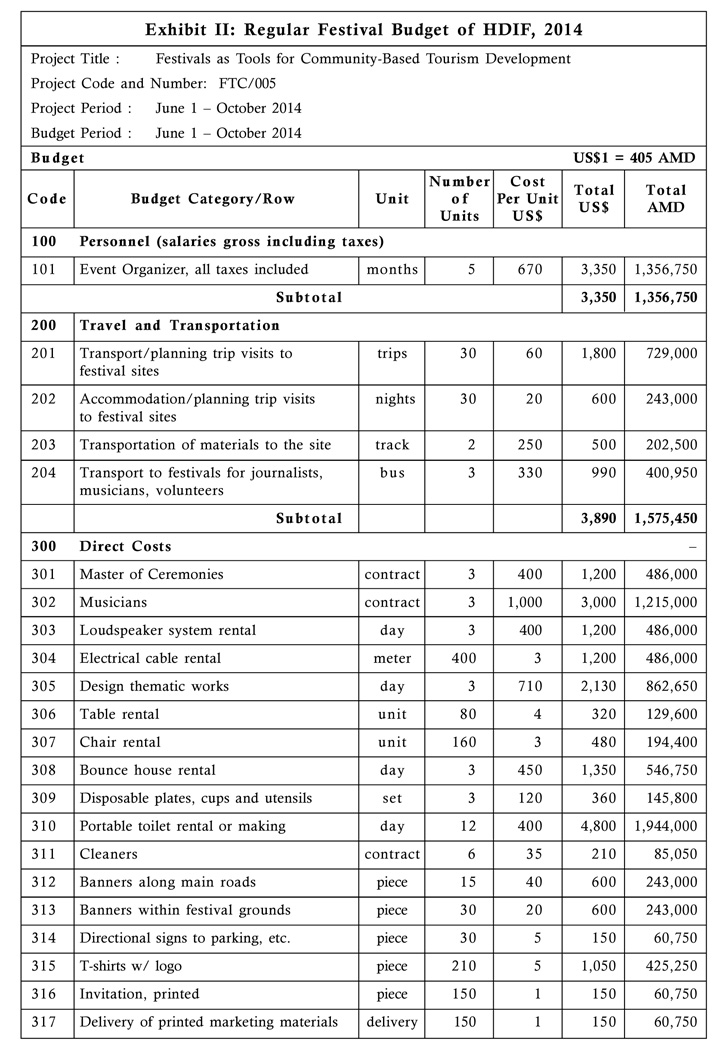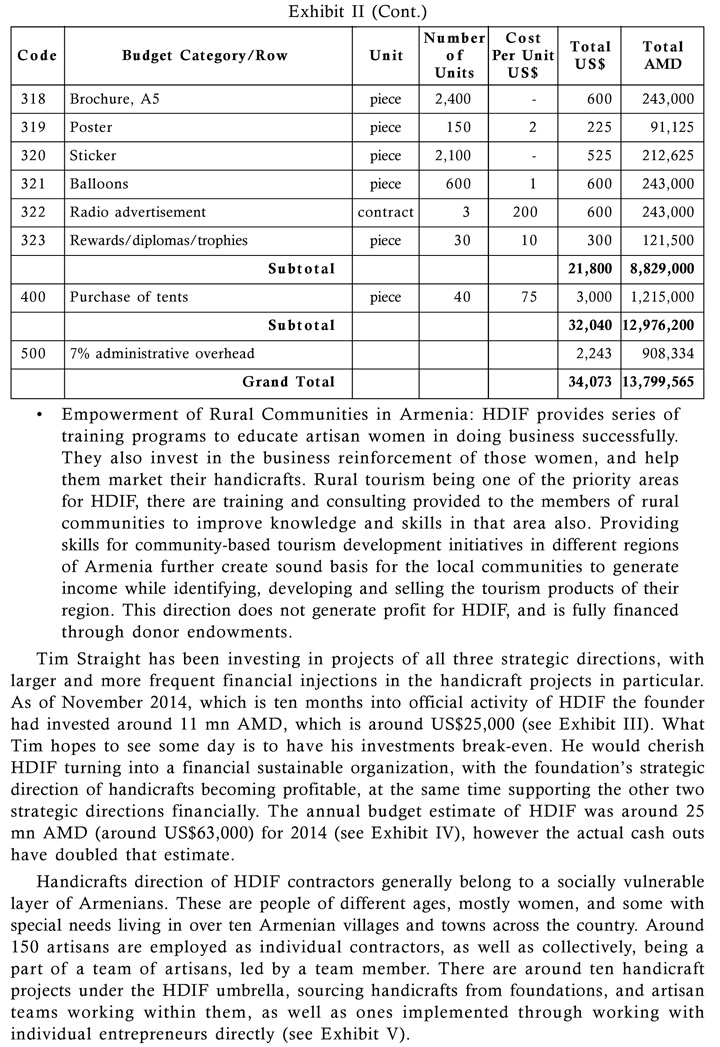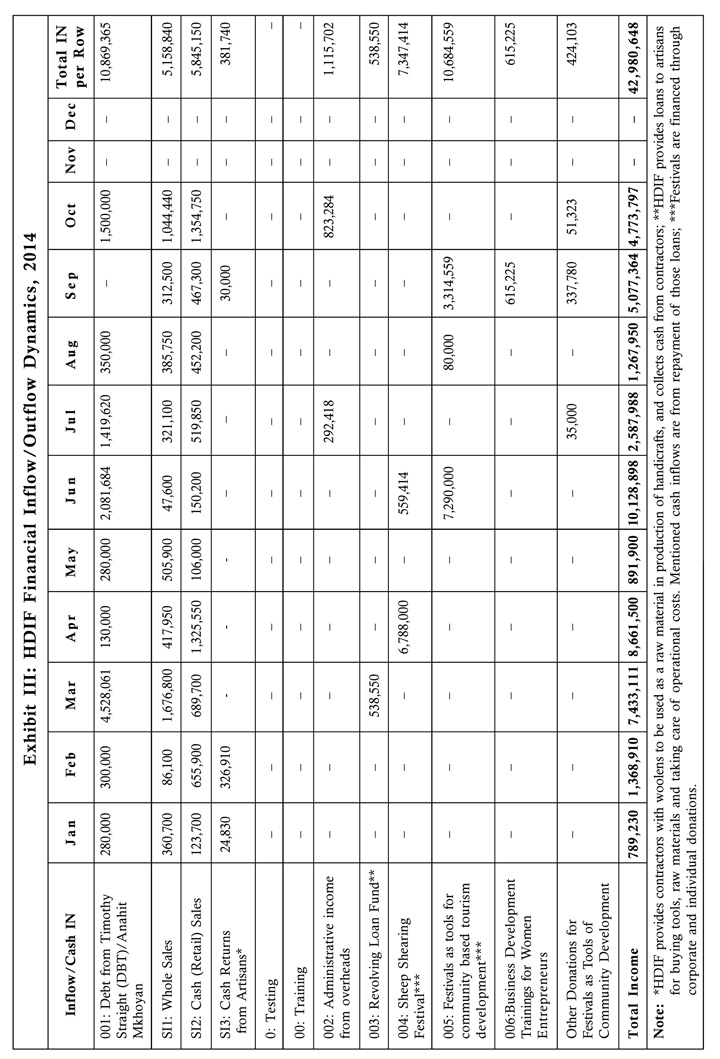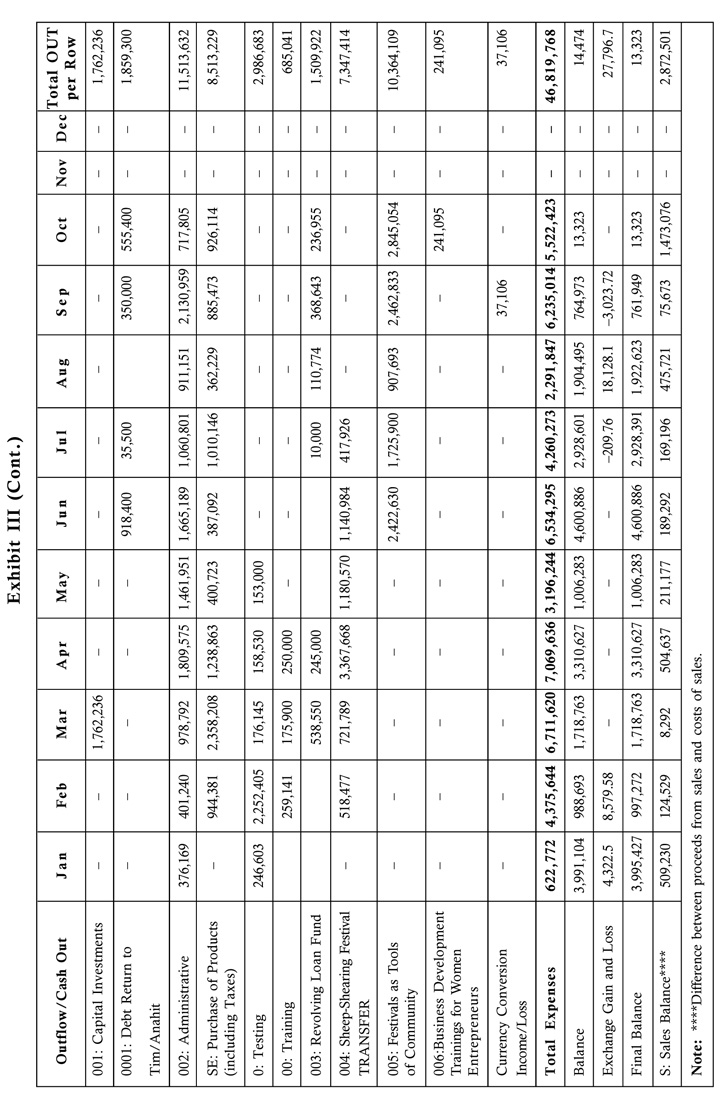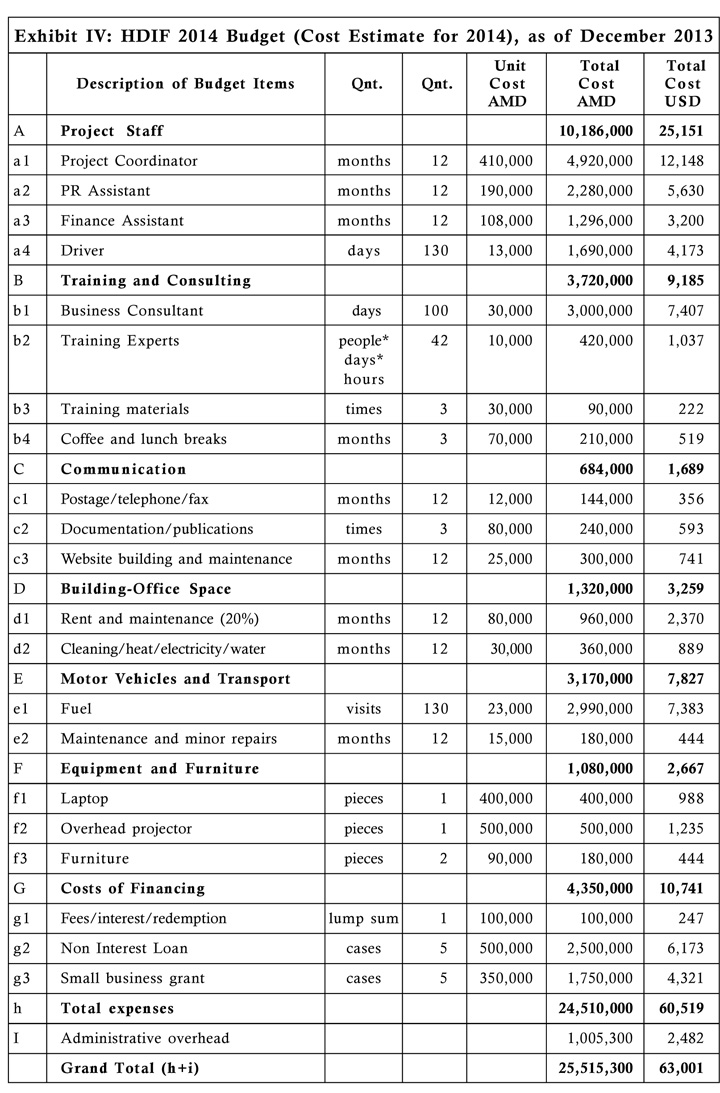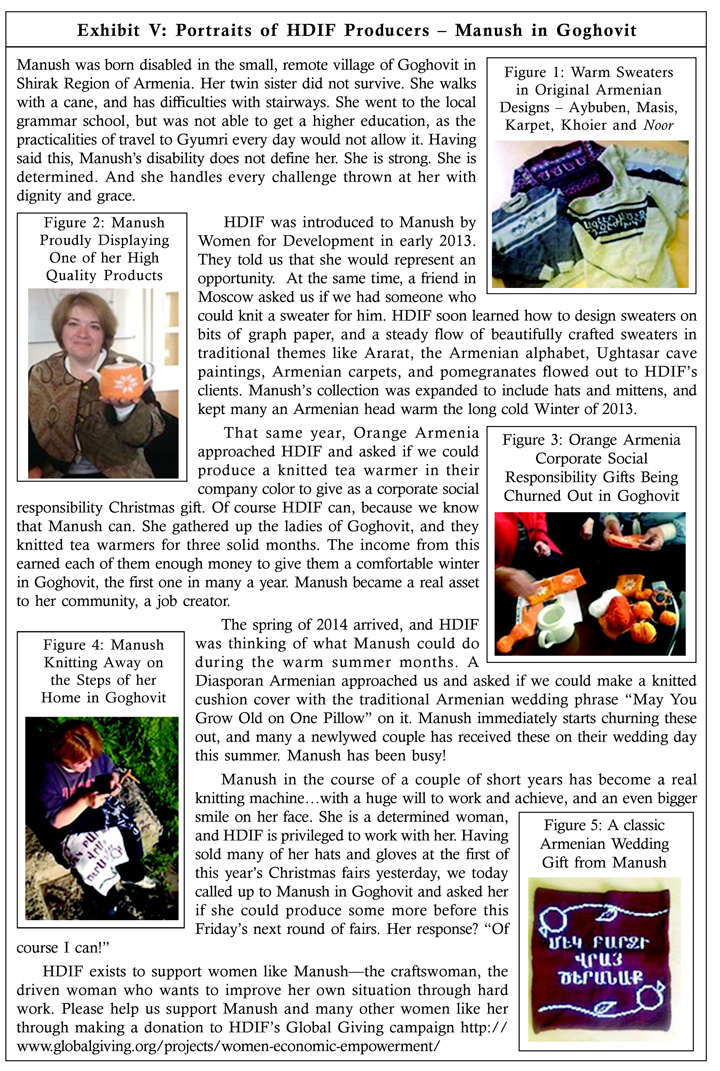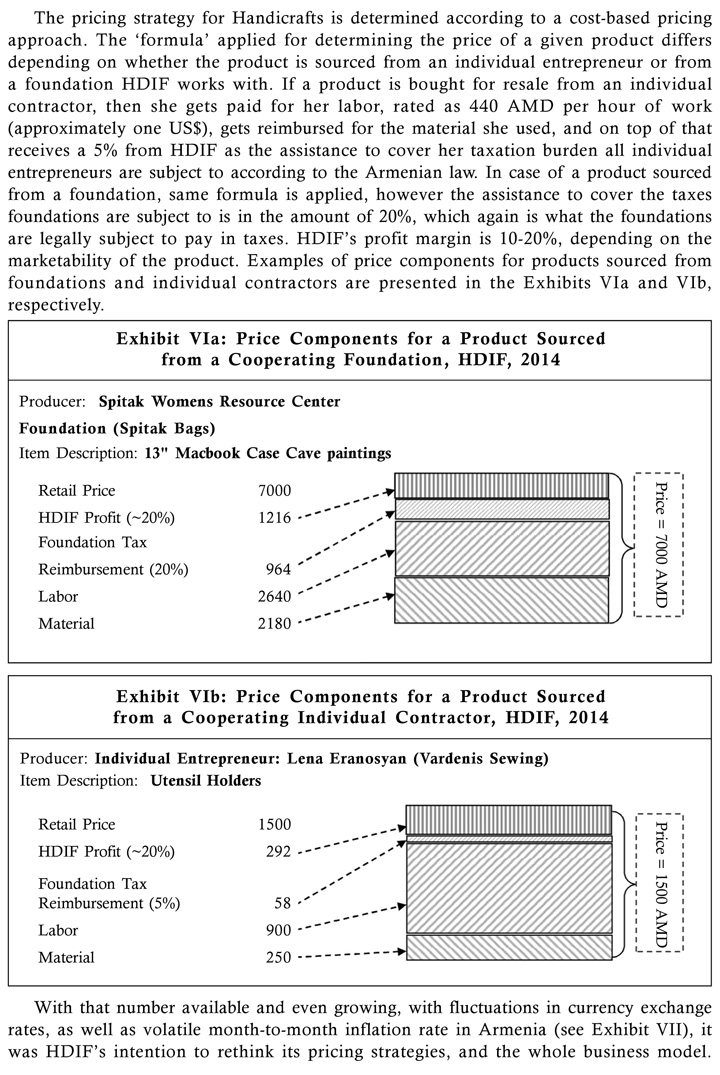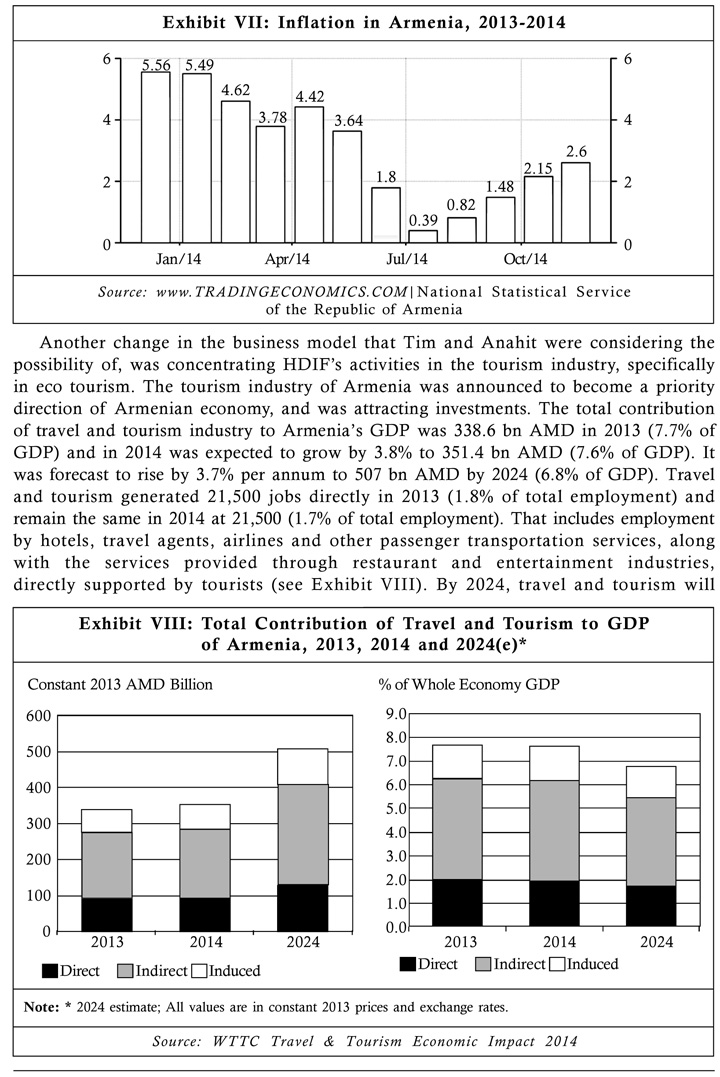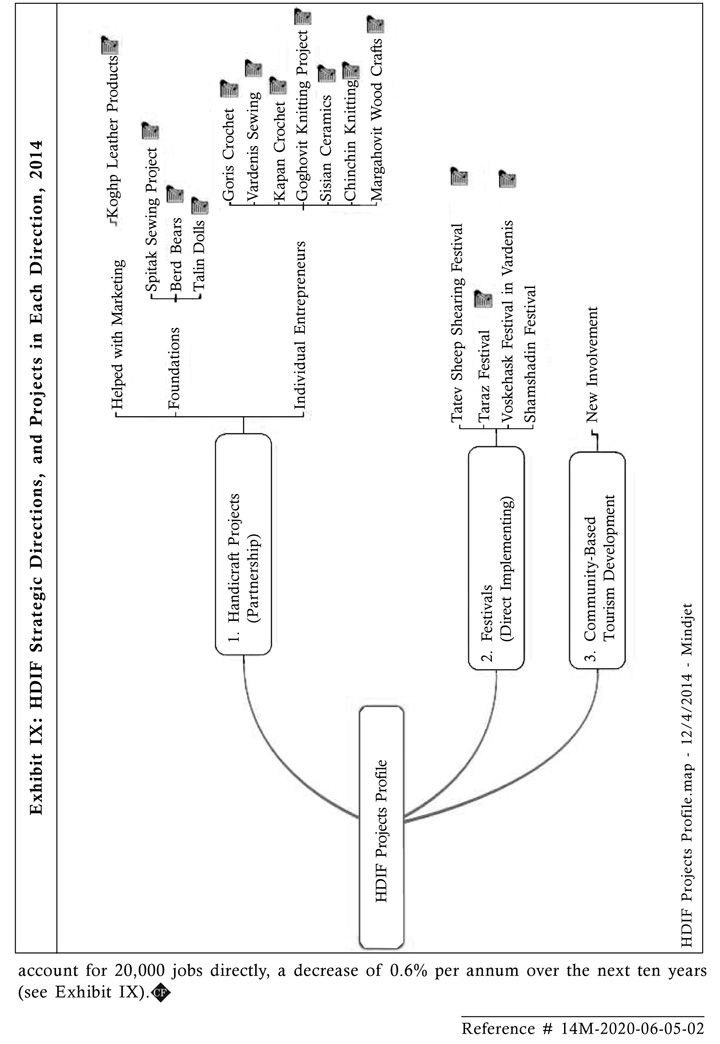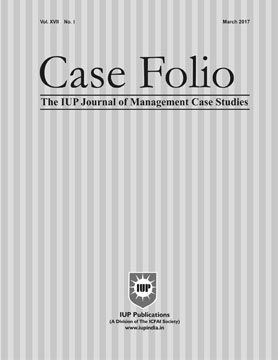
June '20
The IUP Journal of Case Folio
Archives
Homeland Development Initiative Foundation – Searching for Balance Between Social Purpose and Entrepreneurship
Eric Van Genderen
Professor, Advisory Mentor, Judge Business School, University of Cambridge, Cambridge, UK.
E-mail: ericvg@global.t-bird.edu
Anahit Mkhoyan, Executive Director of Homeland Development Initiative Foundation (HDIF) suddenly found herself in the driving seat of the Armenia-based social enterprise. HDIF was focusing its activity on three strategic directions: (1) sales of handicrafts, (2) organization of festivals for tourism development, and (3) empowerment of rural communities in Armenia. She needed to decide which direction she should take the foundation to. There are basically two possibilities: the first is to continue what the foundation is doing, i.e., to emphasize the social purpose of the organization and thus remain heavily dependent on the founder's investment; and the second is to shift to an economically promising area of ecotourism.
Introduction
Anahit Mkhoyan started her morning by checking her e-mails, as usual. One of
the e-mails made her stop and think. It was from Timothy Straight, founder of
the Homeland Development Initiative Foundation (HDIF) who had been in Kurunegala, Sri Lanka for more than a month already. He was writing he was not coming
back. That would mean that Anahit would presumably be the one to take over the organization. Anahit was hired 8 months ago as the Executive Director at HDIF to help Tim setup an organizational strategy for HDIF to pursue. Having ever to replace Tim was not even discussed. Today, unexpectedly she realized she is in charge of the foundation Tim literally crafted with his own hands. Where will the organization be heading if Tim never comes back? Will HDIF further continue empowering women, will it carry on with rural development and social inclusion, or will it focus more on an economically promising area of eco-tourism? Will the foundation be able to sustain without Tim?
Social Entrepreneurship: Vague Definition
As Rotman School of Management's Roger Martin frames it, "the definition of social entrepreneurship today is anything but clear. As a result, social entrepreneurship has become so inclusive that it now has an immense tent into which all manners of socially beneficial activities fit."i Social entrepreneurship must have a social mission, and must be aspiring profit generation-entrepreneur's compensation for their sensing the opportunity, thinking out-of-the-box, and being determined.
Social enterprises are social-purpose businesses. While purely business enterprises satisfy needs, social enterprises often reduce needs rather than just meet them, and seek to create systemic changes and sustainable improvements. Though they may act locally, their actions have the potential to stimulate global improvements in their chosen arenas, whether it is education, healthcare, economic development, arts, the environment, or any other social field.ii
Social Entrepreneurship in Armenia
Social enterprise is not a separate type of organization; it is rather a working style which organizations incorporate in order to become more mission-driven, innovative and efficient.iii
Very few companies follow the triple bottom line approach and financial profit-making remains the major priority for even those enterprises, which announce themselves to be environmentally-conscious and social-oriented. People's and Planet's account initiatives, thus, are rather ‘nice-to-have's, especially with no legal repercussions or enforcement against negative environmental impact, in a country where official unemployment rate is around 20%.iv
Many businesses engage in social entrepreneurship to a different extent by hardwiring Corporate Social Responsibility (CSR) in their business models. CSR should be viewed as a long-term investment directly impacting businesses in a positive way while doing good for the society. One example of hardwiring CSR in their business model is Synopsys Armenia, Armenian subsidiary of Synopsys, Inc. (NASDAQ: SNPS), a global software provider. The company heavily invests in microelectronics education locally and is engaged in a number of successful cooperation programs with major universities of Armenia and the region. These programs are executed through the Synopsys Armenia Educational Department which is a part of Synopsys University Program. 350 students have graduated from these programs, who are now mostly professional engineers employed at Synopsys Armenia itself.
Corporate philanthropy, commercial sponsorship, and benevolence are largely confused with CSR activities in Armenia and are reported as such by many companies. One example is VivaCell – MTS, a mobile service provider who sponsored Serj Tankian's concert in Armenia in 2011, as well as spent approximately US$580,000 on sponsoring a mind-blowing performance of the opera Aida in December 2010-both reported as their CSR activity. By engaging in projects like that, companies definitely gain long-term benefits, but they are mainly in a PR and advertising areas. Unless investments are both long-term strategic ones, and are directly related to their core business activity, they should not be referred to as CSR. As a Corporate Responsibility and Sustainability Professional Nazareth Seferian puts it:
I find it easier to understand cases where companies declare that their philanthropic activities are actually strategic CSR and the confusion between corporate philanthropy and CSR is a major issue in Armenia as well. Perhaps a lot more time is needed before there is a clear understanding of the differences between philanthropy and strategic CSR I would be very happy to see VivaCell-MTS continue to do their wonderful work in the areas or corporate philanthropy, CSR and commercial sponsorship. And I love the fact that the company produces an Armenia-specific publication, focusing on the community work it does in this country. But I would be much happier to see a spade called a spade. I think it is perfectly fine for a company to have annual publications about the work that it does in these areas, as long as it is willing to concede that these are different concepts.v
Non-Governmental Organizations (NGOs) undertake projects that support business initiatives that have social components; however, those by definition as well as legally, do not have the right to realize income generating activities. NGOs are not direct players in the social entrepreneurship field and are rather facilitators in the process.
International organizations indeed support a number of social enterprises in Armenia. In 2013, UNICEF/UNDP undertook a social entrepreneurship competition in Armenia, KolbaLabs, inviting participants to submit their ideas on businesses that would have sustainable revenue generation models, at the same time addressing a social issue, thus they hire both targets ten best projects received business training, and pitched their projects to the investors and a panel of judges, and four best projects of 2011 KolbaLabs project received grants of around US$7,000 for supporting their social enterprises. Only two spinoffs of the project developed into valid social enterprises. In 2014, KolbaLabs project, although still referring to itself as a social venture incubator, refocused from supporting social businesses with training, seed-investment and connecting social business start-ups with potential investors, to sponsoring merely social initiatives (no business component is a must any longer) through UN funds.vi
Competition?
Social enterprises provide solutions to a limited number of specific problems, such as unemployment, rural development, social inclusion and gender issues. The activities in different areas, thus are rarely duplicated. They ‘compete' rather with other solution providers such as NGOs, CSR projects of for-profit enterprises, benevolent campaigns, and government programs.
Seeing Hands
Mariam Dilbandian had the idea of retraining blind people who received massage skill trainings during Soviet times as a part of a state program into professionals in modern, western massage techniques in order to open a studio, where she could employ them. Teaming up with her friend Liana Avetian, a professional massage therapist who had studied in Boston, and later with LA-born masseur Viken, she managed to train a number of masseurs over a period of almost a year.
Mariam's marketing strategy revolved as much as possible on gaining free advertisement through press coverage. She attracted attention by appearing on a number of important shows on local TV, as well as in a number of publications. News of her studio was spread through word-of-mouth. The marketing message emphasized the competitive advantage of trainers with more developed sense of touch due to blindness, as well as newer, more spa-style massage applied (different from the old Soviet medical style massage).
Customers were not supposed to feel as if they were patients, but rather, be there to relax. The Studio would target middle-class Yerevan inhabitants, particularly those working for IT companies, known to have chronic back problems. The founder targeted this group as one having some disposable income even though the prices she offered were quite reasonable in order to remain competitive. Repatriated Armenians, as well as expats, were believed to also have the money to pay for such services, and in addition they were familiar with the concept of blind massage.
The founder also applied for the UNDP-funded KolbaLabs project and won the first prize of US$7,000, and used the funds to rent the studio space, to buy equipment such as massage tables, towels, decorations, furniture, uniforms, etc., and to have Mariam's company registered officially.
Seeing Hands currently has two rooms operating simultaneously, catering for an average of 8 clients daily. The studio also has exclusive massage deals with the Tuffenkian Hotels, Hyatt Place, and is working on a similar contract with VivaCell MTS and Orange.
ONEArmenia
ONEArmenia is a company registered in New York City and Yerevan, founded by Armenian Patrick Sarkissian; the company facilitates the funding of Armenian tech and cultural projects through organizing crowdfunding campaigns. As the PR message on the company's website suggests, "ONEArmenia believes culture and technology are universal equalizers with no borders, and able to create limitless possibilities for the future. They are a mode for expression, a ticket to progress and accessible to anyone in their simplest forms. Armenia has a 4,500-year-old rich history that is strongly rooted in its cultural practices and traditions. Meanwhile, its IT sector is booming, taking up a clean, corruption-free 20% of the country's annual GDP. It is the coolest place you have never heard of a powerhouse of creativity and invention."vii
Since its establishment in 2012 ONEArmenia helped crowdfund around 10 culture and tech projects on IndieGoGo, crowdsourced 3 culture and tech ideas from their community and implemented them with seed money and resources. Also, ONEArmenia claims to be a resource to facilitate connections between projects that need a helping hand and volunteers who have time and resources to give to the initiatives they care about.
With nine crowdfunding campaigns completed by above 103% funding, three crowdsourced projects in culture and tech, a viral short film and a free public bus running in Yerevan under its belt, the young organization continues to evolve and thrive on the legwork of a growing roster of talented young team members from around the world. With donors like the founder of Apple Computers Steve Wozniak, OneArmenia claimed to have successfully created a modern bridge to Armenia.
Claiming to disrupt routine with creative interventions and community projects in Armenia and the world at large, ONEArmenia helped fund their largest project on IndieGoGo, raising around US$30,000 for an environmental campaign for AUA Center for Responsible Mining. The funds raised will help purchase urgently needed environmental laboratory equipment that will enable AUA scientists to survey the impacts of mining in Armenia, to inform affected citizens of these impacts and to find solutions that preserve the health and quality of communities and their environment.
Homeland Development Initiative Foundation – HDIF
HDIF is a social enterprise focusing on three directions: (1) sales of handicrafts, (2) organization of festivals for tourism development, and (3) empowerment of rural communities in Armenia, the latter being adjacent to the first two. Founded on March 25 of 2013, HDIF is the structured and legal entity born of the Homeland Handicrafts project, which was started by Norwegian and Finish Honorary Consul in Armenia Timothy Straight three years prior to the establishment of the Foundation.
Social Mission
In the Handicrafts direction, HDIF's work goes beyond providing a market for the sale of handicrafts. Through working with the particular contractors and participating in their lives HDIF initiates, facilitates, and nurtures sustainable development in Armenian communities. The social component is believed to impact the business model positively: high level of integrity is generated with the contractors while implementing activities.
Festivals organization direction of the HDIF translates into the longer term development of ethnic tourism in Armenia, holding a social mission and leading to direct economic effects. Festivals provide the communities with the opportunity to showcase their cultural values to wider public and attracting new visitors. Examples of direct economic effects of festivals on regions are sales of particular festival-themed handicrafts during the festivals. Examples of indirect economic effects are tourists visiting the region to participate in the festival staying in B&Bs during the festival, and using local restaurants. Social mission of festivals is bigger: it is to enhance the capacity of local communities to organize community-based large events and accept wide range of tourists in their settlements.
As of the third strategic direction of HDIF activity, the empowerment of rural communities in Armenia, its social mission is twofold: capacity building in women entrepreneurship, and skill development in attracting and servicing eco-tourists in rural communities.
For capacity building in women entrepreneurship, HDIF has a social mission of development of women-led businesses in the regions of Armenia, thus not only promoting the job creation, but also lessening inequality between the positions of women and men in rural societies. In the economic sphere, this gender inequality increases the risk of discrimination with regard to the enjoyment of rights and opportunities, and the traditional division of gender roles becomes a strong factor for gender inequality.
The communities that may have many wonderful things in their areas are not skilled enough to market their products and entertainment areas. Thus, the tourism flow to Armenia remains centralized in certain areas attracting mainly Diaspora Armenians and people with interest in history. Tourism in the countryside is different than that of traditional resorts and mass tourism destinations. It may offer individual and more authentic tourism experiences, which will satisfy the needs of the highly demanded new tourists. In order to attract new tourists, the local communities have to be experienced in welcoming and hosting tourists, so that the local economic development is also promoted. HDIF seeks to develop skills in attracting and servicing eco tourists in rural communities. The involvement of local people in tourism promotes several important national objectives: empowerment of local people, improved resource conservation by local people, diversification tourism product, and faster economic growth in the regions, improved welfare and equity. It will build the capacities of the communities in marketing their area and meeting tourists' needs when they arrive at the spot.
Business Model
Handicrafts Production: The contractors provide dependable quality products on a timely basis and thus contribute to the growth of HDIF, while HDIF pays a standard fee of 440 AMD (equivalent of approximately one US dollar) per working hour to its contractors. The contractors create a number of different types of products: there are hand-knit teddy bears, following the unique pattern of a German nun who once lived in a small borderline village of Berd; there are sewn kitchen items, designed to follow the traditional Armenian costumes of various regions of Western Armenia; there are tiny crocheted animals, sewn iPad cases, knitted sweaters, embroidery, and more. For a list of products sourced from the town of Vardenis' sewing individual entrepreneurs, as well as their prices (see Exhibit I). As additional means of financing their contractors, especially individual entrepreneurs, HDIF supports them with marketing their works on the company website and social networks, as well as helps them organize crowdfunding campaigns.
Festivals: Festivals are one of the activities which firstly promote the development and sale of local products as well as attract new visitors, who may bring in new opportunities with them. Three to four festivals are organized annually, some of which have already become hallmark events of the region, i.e., Sheep Shearing of Halidzor, Shamshadine Honey and Berry festival, Taraz Fest in Old Arpeni Village, and Golden Wheat Festival in Vardenis. HDIF organizes the festival and charges overhead costs to the festival budget (see Exhibit II). There is no profit generation model embedded in the festival direction, as all festivals are financed through sponsorship money, mainly corporate.
